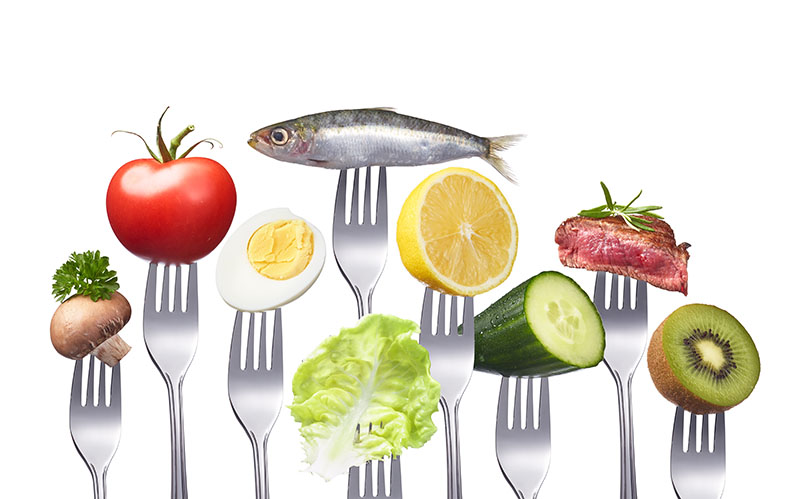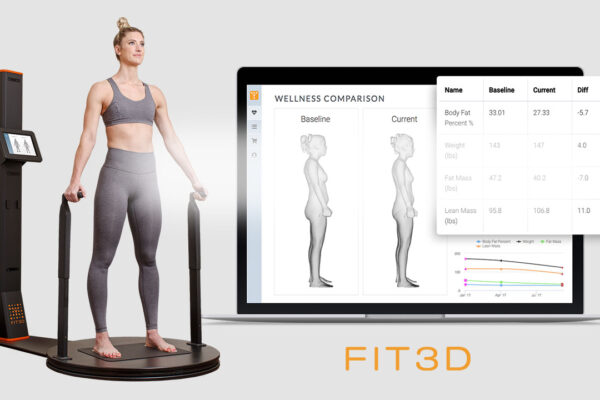Accurate macronutrient planning made simpler.
Now that you understand some of the most basic nutrition concepts, you can start using your DEXA and RMR test results to create a personalized nutrition plan. As we explained in our blog post on Nutrition Basics, weight loss (and gain!) is a matter of energy balance. In other words, it’s a math problem. By consuming fewer calories than you use, you create a calorie deficit that results in fat loss. If you consume more calories than you use, then you create a calorie surplus and the excess calories are stored as body fat for later use. Not every pound lost or gained can be attributed to fat, though. Your body is comprised primarily of body fat, bone, and lean muscle, which includes your skeletal muscles (like biceps and quads) and your heart and smooth muscle. Changes in weight can come from variances in hydration and from an increase or decrease in body fat or muscle. Because body composition is a better indicator of weight and progress towards goals, we focus on lowering body fat and increasing muscle mass rather than “weight loss.”
Creating your nutrition plan starts with understanding some basic information about yourself.
- What is your goal? Do you want to focus primarily on losing body fat or on gaining muscle? It’s not impossible to accomplish both simultaneously, but you’ll need to be realistic about which is your priority. If you have excess body fat to lose then we recommend focusing on fat loss first.
- How many calories do you need? You’ll need to understand your Total Daily Energy Expenditure, or TDEE. The best way to understand your body’s calorie needs is to have your Resting Metabolic Rate tested. Online calculators can estimate your needs but be aware that the equations used can be off by 20-30%, causing you to either under eat or to overeat.
Now that you know your numbers, let’s talk about how to use them to customize your own macronutrient plan. Remember, all foods are made of macronutrients, or macros, and most foods are a combination of all three macros – protein, fat, and carbohydrate. A custom nutrition plan creates a calorie target to guide how many calories you eat each day and breaks your calories down by macronutrients to ensure you are getting the right nutrition for your goal.
To create a plan for losing fat:
- Determine your daily calorie goal. For example, if your TDEE is 2500 calories then you can create a calorie deficit of 500 calories a day by setting your daily calorie goal at 2000 calories. We recommend a moderate calorie deficit of 10-20% of your TDEE to create a sustainable fat loss plan that minimizes loss of lean muscle.
- Determine how many calories you will need from each macro on the following macro ratio:
Protein: 40%
Fat: 30%
Carbohydrate: 30%
To do this, multiply your calorie target by 0.4 for protein and by 0.3 for fat and carbohydrate to determine how many calories will come from each macro every day. For example, if your calorie goal is 2000 calories a day, then your macro ratio would look like this:
Protein: 2000 x 0.4 = 800 calories
Fat: 2000 x 0.3 = 600 calories
Carbohydrate: 2000 x 0.3 = 600 calories - Calculate how many grams of each macro you will eat. One gram of protein or carbohydrate has 4 calories while a gram of fat has 9 calories.
Protein: 800 ÷ 4 = 200 grams
Fat: 600 ÷ 9 = 67 grams
Carbohydrate: 600 ÷ 4 = 150 grams
Using these steps for our example, a person with a TDEE of 2500 could create a calorie deficit of 500 calories a day by eating 2000 calories. To ensure a balanced diet, this person could plan to eat 200 grams of protein, 67 grams of fat, and 150 grams of carbohydrate each day. By creating a 500-calorie daily deficit, this person would lose about a pound of body fat each week following this plan, or the person could add more activity or increase the intensity of activity to create an even deeper deficit and burn more fat.
If your goal is to gain muscle or to gain weight, then follow the same steps but create a calorie surplus by setting your calorie goal 10-15% higher than your TDEE. Muscle growth requires resistance training, so be sure you are engaged in an appropriate strength training program that will use the surplus calories. Creating a calorie surplus without resistance training will likely lead to fat gains rather than new muscle growth.
Many people find they feel better on more personalized macro ratios. For example, an endurance athlete may perform better with a higher carbohydrate ratio while an insulin resistant person may feel more balanced when eating a lower carbohydrate ratio. It’s okay to try different macro ratios but stick to your plan 2-4 weeks before making changes so you can find out how your body responds.
Remember that as your body composition changes, your body’s energy requirements will change too. A significant change in your body weight can reduce your body’s caloric needs while an increase in muscle can increase the calories your body burns even at rest. The scale can tell you whether you’ve lost weight, but it can’t reveal whether you’ve lost or gained muscle, so make sure to check your body composition often during your transformation. Revisit your nutrition plan every 2-3 months and recalculate your body’s needs and adjust your macro plan accordingly.
To help you fine tune your nutrition plan, we’ve created a FREE Macronutrient Calculator that actually uses your test results! If you want more personalized help, then we also offer nutrition services such as macro planning and nutrition coaching. You can schedule a FREE 15-minute consultation with our certified nutritionist to find out which of our nutrition services is right for you and your goals.





Recent Comments